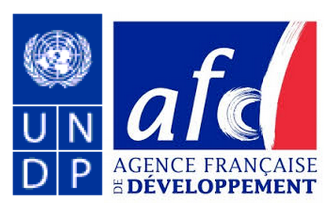At a side event during the High-level Political Forum on Sustainable Development (HLPF), the UN Development Programme (UNDP) and the French Development Agency (AFD) launched a report on financing the Sustainable Development Goals (SDGs) in the least developed countries (LDCs).
The report examines a variety of financial instruments and explores the extent to which they can be or are used in the LDCs to finance sustainable development and manage risks.
 11 July 2016: At a side event during the High-level Political Forum on Sustainable Development (HLPF), the UN Development Programme (UNDP) and the French Development Agency (AFD) launched a report on financing the Sustainable Development Goals (SDGs) in the least developed countries (LDCs). The report examines a variety of financial instruments and explores the extent to which they can be or are used in the LDCs to finance sustainable development and manage risks.
11 July 2016: At a side event during the High-level Political Forum on Sustainable Development (HLPF), the UN Development Programme (UNDP) and the French Development Agency (AFD) launched a report on financing the Sustainable Development Goals (SDGs) in the least developed countries (LDCs). The report examines a variety of financial instruments and explores the extent to which they can be or are used in the LDCs to finance sustainable development and manage risks.
The joint report from UNDP and AFD, titled ‘Financing the SDGs in the LDCs: Diversifying the Financing Tool-box and Managing Vulnerability,’ was launched during an event organized by UNDP, AFD and the Permanent Mission of France, and took place on 11 July 2016, at UN Headquarters in New York, US.
The report notes that while foreign direct investment (FDI) flows to the LDCs have increased over the last 15 years, they are concentrated in a few resource-rich countries, leaving many LDCs still heavily dependent on Official Development Assistance (ODA). Noting that the investment requirements of the 2030 Agenda for Sustainable Development cannot be met through ODA alone, the authors stress that LDCs will also need to make effective use of other official and private flows, including debt and equity. They propose a diverse international financing “tool-box,” including such financing instruments as: blended finance; guarantees; local currency financing; green and blue bond financing; GDP-indexed bonds; and counter-cyclical loans. The authors note that financing must be tailored to the specific needs and characteristics of LDCs, adding that these instruments can only fully achieve their potential benefits in LDCs if the countries develop the capacity to use and manage them effectively.
Opening the event, Francois Delattre, Permanent Representative of France, said countries that lack market access continue to rely heavily on development aid, and called for targeting investment towards the countries that need it the most. Magdy Martinez-Soliman, UNDP, noted the need for technical assistance for LDCs in the current increasingly complex and highly sophisticated financial landscape, and said many of UNDP’s efforts are focused on reducing risk. He highlighted the importance of domestic resource mobilization and of financial education for small producers and farmers.
Gail Hurley, UNDP, one of the report’s authors, stressed that risk-mitigation instruments are an absolute necessity for LDCs given their high vulnerability to shocks, and highlighted three innovations in lending that could help countries manage risk: GDP-indexed bonds, which could help countries reduce their debt by 8% over a period of ten years; counter-cyclical loans, which can allow governments the necessary fiscal “breathing space” to focus on reconstruction rather than on borrowing after a crisis; and catastrophe and risk-deferred drawdown options. She stressed the need for capacity-building support to LDCs for project design, and management and use of these instruments, as well as tailored support during the LDCs’ graduation process. Thomas Brett, European Investment Bank (EIB), said donors’ procedures must take into account their measures’ cumulative effects, to avoid unintended consequences. He underlined that ownership of the solutions needs to be with the countries, with the international community providing support only in the development process.
The report contains an executive summary, an introduction, and three chapters: ‘Paving the way for graduation,’ which provides a snapshot of LDCs’ situation by looking at their social and economic progress, vulnerability to external shocks and other risks, and the transformation challenges underlying the 2030 Agenda; ‘Mobilizing finance to address LDCs’ sustainable development challenges,’ which proposes ways of seizing the opportunities of a sophisticated development financing tool-box, such as strengthening capacity with blended finance, enhancing access to credit with guarantees for development, financing local investment and small and medium enterprises (SMEs), strengthening financial institutions with local currency lending, or financing sustainable development with green and blue bonds; and ‘Improving LDCs’ access to the financing tool-box.’
The HLPF is taking place from 11-20 July 2016, at UN Headquarters in New York, US, under the theme ‘Ensuring that No One is Left Behind.’ [IISD RS Sources] [Joint Report: Financing the SDGs in the LDCs: Diversifying the Financing Tool-box and Managing Vulnerability] [HLPF Side Events]